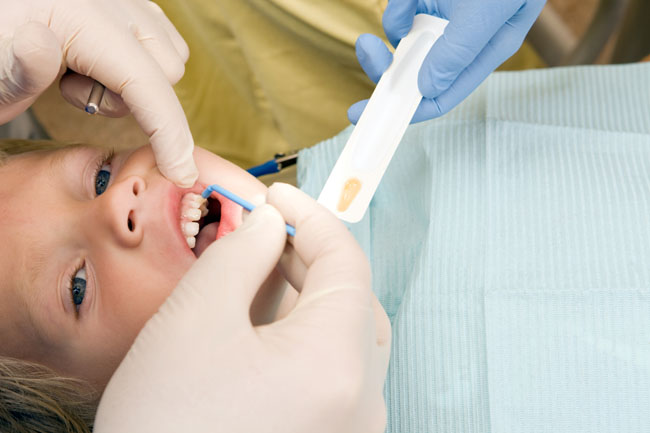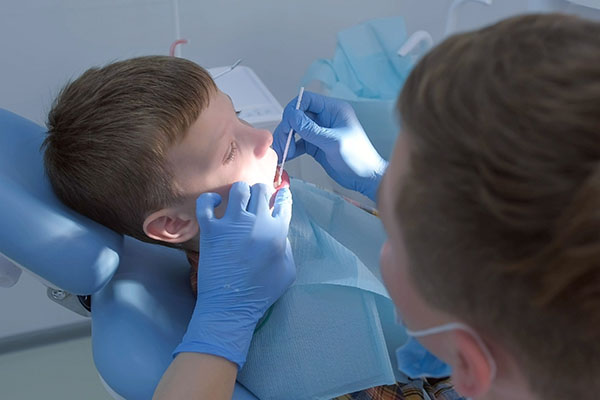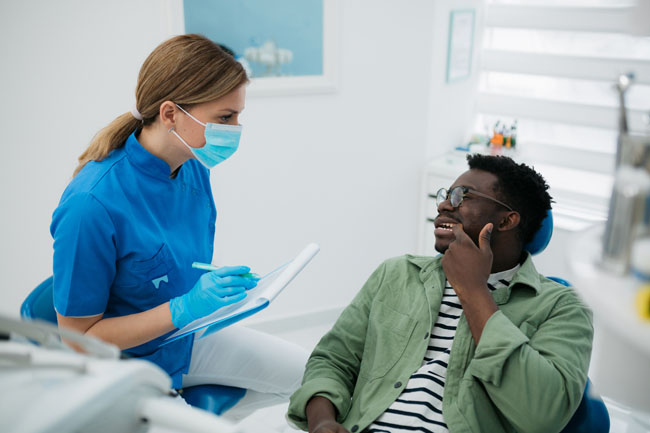Minimally Invasive Care
Minimally invasive care (MIC) offers a gentler, more accessible alternative to traditional dental procedures — preventing and treating decay without removing tooth structure.
What Are the Advantages of Minimally Invasive Care?
The simple treatment options of MIC can reduce anxiety, save money, and result in better long-term outcomes. MIC can also help patients (and providers) avoid the cycle of repairs that are often needed with other restorative work, detecting and treating small cavities early.
What’s more, MIC can be delivered by different members of the care team, including dental hygienists, dental therapists, dental assistants, and medical providers, which can expand access for patients — especially in rural areas.
Types of Minimally Invasive Care
Silver Fluoride
Silver fluoride is a water-based liquid professionally applied to teeth using a small brush. It contains silver, which kills germs that can cause tooth decay, as well as fluoride, to prevent, slow down, or stop decay.
Providers commonly use silver diamine fluoride (SDF) as a treatment for children (and is a valuable option for adults) because it provides less discomfort than the “drill and fill” methods, and many appreciate its ease of use. However, SDF is not without downsides: It leaves a black stain on these lesions and may burn or stain the soft tissue surrounding them.
Fluoride Varnish
Fluoride varnish is a highly concentrated form of fluoride professionally applied to teeth to prevent tooth decay. It is especially effective with multiple applications.
Povidone-Iodine
Povidone-iodine is a water-based liquid that can prevent tooth decay when applied with a cotton swab onto the surface of the tooth. Povidone-iodine treats the disease rather than just repairing its damage. People with elevated caries risk are good candidates for povidone-iodine.
Guided Enamel Regeneration
Guided enamel regeneration treats the first stage of tooth decay, known as initial caries. At this stage, there is demineralization, but a cavity hasn’t yet formed that would let bacteria into the tooth. Application of self-assembling peptide (SAP) P11-4 helps to avoid repeated cycles of decay and repair.
CPT Code for Medical Professionals to Apply Silver Diamine Fluoride
The addition of a code for the application of silver diamine fluoride (SDF) by medical professionals to arrest cavities was a major milestone in advancing an integrated approach to oral health inequities. In 2022, CareQuest Institute, in partnership with several leading oral health and medical organizations including the American Medical Association, championed the change.
Stats
97%
Dental caries, or dental decay, is one of the most prevalent human diseases, affecting 97% of the global population throughout their lifetime.
Learn more
90%
90% of 377 dental providers agreed that SDF is an effective choice of treatment.
Learn more
0-3
The American Academy of Pediatrics (AAP), the American Dental Association (ADA), and the American Academy of Pediatric Dentists (AAPD) encourage medical providers to apply fluoride varnish to infants’ teeth, from birth to age 3.
Learn more
60%
Among older adults, SDF prevented 60% of root caries, according to a 2018 study.
Learn more
The Non-Invasive Caries Therapy (NICT) Guide & Resources
The NICT Guide is an illustrated manual on diagnostics, preventives, and therapeutics to fight dental caries without removing any tooth structure. It includes step-by-step instructions on how to:
- Differentiate active vs. arrested caries lesions
- Apply SDF, SAP P11-4, and more
- Perform the Hall technique, which restores decayed primary molars using a metal crown



